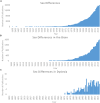Neurobiological Sex Differences in Developmental Dyslexia
- PMID: 30687153
- PMCID: PMC6336691
- DOI: 10.3389/fpsyg.2018.02669
Neurobiological Sex Differences in Developmental Dyslexia
Abstract
Understanding sex differences at the neurobiological level has become increasingly crucial in both basic and applied research. In the study of developmental dyslexia, early neuroimaging investigations were dominated by male-only or male-dominated samples, due at least in part to males being diagnosed more frequently. While recent studies more consistently balance the inclusion of both sexes, there has been little movement toward directly characterizing potential sex differences of the disorder. However, a string of recent work suggests that the brain basis of dyslexia may indeed be different in males and females. This potential sex difference has implications for existing models of dyslexia, and would inform approaches to the remediation of reading difficulties. This article reviews recent evidence for sex differences in dyslexia, discusses the impact these studies have on the understanding of the brain basis of dyslexia, and provides a framework for how these differential neuroanatomical profiles may develop.
Keywords: dyslexia; genetics; neuroanatomy; reading; sex differences.
Figures


References
-
- Adler W. T., Platt M. P., Mehlhorn A. J., Haight J. L., Currier T. A., Etchegaray M. A., et al. (2013). Position of neocortical neurons transfected at different gestational ages with shRNA targeted against candidate dyslexia susceptibility genes. PLoS One 8:e65179. 10.1371/journal.pone.0065179 - DOI - PMC - PubMed
-
- Altarelli I., Monzalvo K., Iannuzzi S., Fluss J., Billard C., Ramus F., et al. (2013). A functionally guided approach to the morphometry of occipitotemporal regions in developmental dyslexia: evidence for differential effects in boys and girls. J. Neurosci. 33 11296–11301. 10.1523/JNEUROSCI.5854-12.2013 - DOI - PMC - PubMed
Grants and funding
LinkOut - more resources
Full Text Sources

